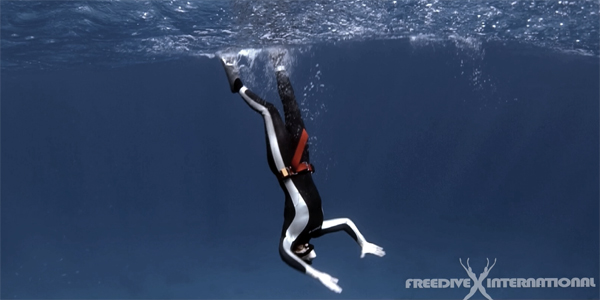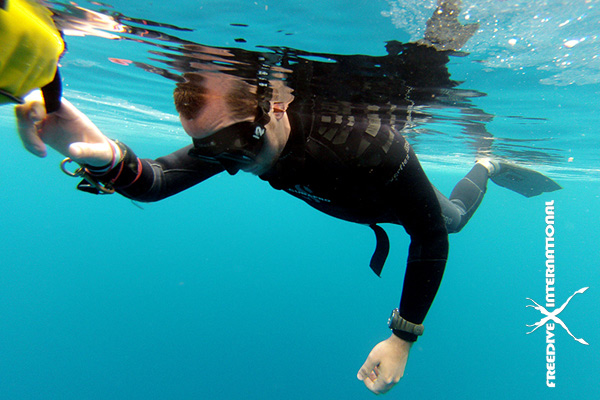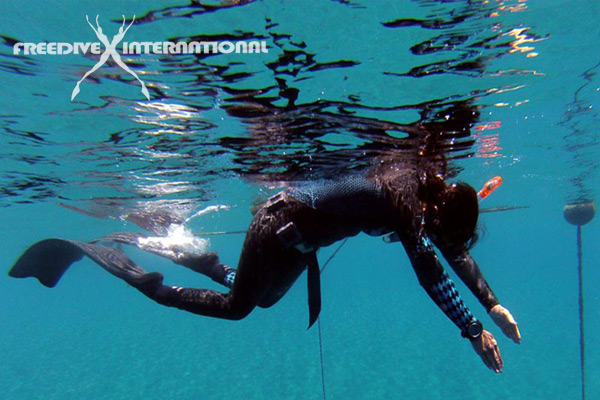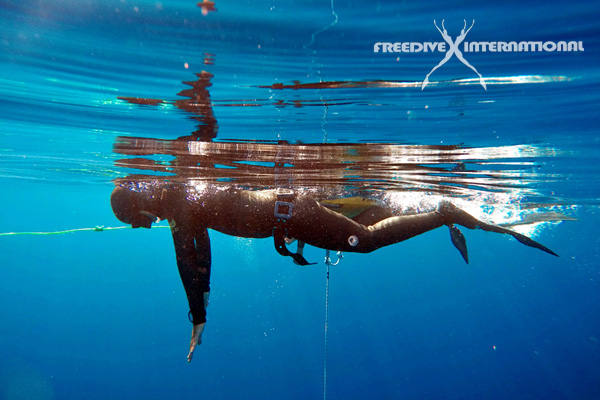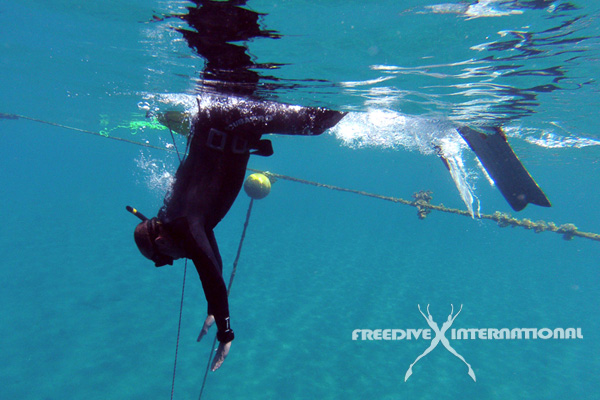The secret of a pro-duck-dive? Practice, and practice, and practice!
Here you will find some tips for who are still struggling with their duck-dive and want to improve.
Note!! You should never go freedive alone if you are working on depth or to extend your dive time, but it is possible to train duck-diving anytime and even in a pool if it is at least 2.5 meters deep.
If you are using a buoy, hold on to it with one hand while you breathe-up.
This way you can completely relax while not drifting away.
During the duck-dive, the momentum or forward push, comes mainly from your hips, not from your arms or legs.
How do you use your hips to get yourself underwater? While laying flat on the surface, simply try to raise your bum up as if you wanted to push it out of the water.
Check out the photo below and note how the freediver is about to push her hips up, just after pushing both her fins slightly down. Doing this with the right timing is the key for an efficient and smooth duck-dive.
Point your arms down so they point vertically towards the bottom.
If you dive along a rope, make sure that the buoy is next to your hip by the time you start your dive; if you are further back (if the buoy is at the level of your head instead), by the end of the duck-dive you will have the rope behind you instead than in front of you, and you will have to waste precious energy to turn your body around looking for the rope. In the first few meters you want to be as efficient as possible, since the positive buoyancy is working against you.
Dont look down during the duck-dive (nor during the descent).
This will create an arch in your upper body, changing your direction and also creating a lot of drag, which will slow you down. The photo below shows a freediver looking down; check the back arch, the change of direction and also the wrong angle at which the arms are pointing.
Check these 3 short videos!
The first is an efficient duck-dive filmed in slo-mo so you have the time to see it step by step.
The second video is a beginner-intermediate level duck-dive: it takes you down but with some energy waste:his momentum was a bit off and his arm stroke was too early, with the result that the legs were stil partially out of the water when he started finning.
The third video show how a duck-dive should never be done:)
Since there was not enough momentum / forward push to bring the body fully underwater, the freediver is finning with his legs completely out of the water with the result that he is not going anywhere, for a very long time.
All photos and videos taken during courses and training with Freedive Dahab.
Taking a course with a professional instructor is without a doubt the best way to learn freediving techniques in an efficient and safe way
These tips may help you correct little mistakes and improve, but this article is not a replacement for proper instructions!

